Ramsay Hunt syndrome
Table of Contents
What is Ramsay Hunt syndrome?
- Ramsay Hunt syndrome is also known as the Hunt syndrome, Herpes zoster oticus, Geniculate ganglion zoster, Geniculate herpes& Herpetic geniculate ganglionitis
- Ramsay Hunt syndrome is the painful rash around the ear, on the face, or on the mouth. It happens when the varicella-zoster virus infects a nerve in the head.
- It [herpes zoster oticus] happens when a shingles outbreak affects the facial nerve near one of your ears. In addition to the painful shingles rash, Ramsay Hunt syndrome can cause facial paralysis & hearing loss in the affected ear.
- Ramsay Hunt syndrome is caused by the same virus that which leads to chickenpox. After the chickenpox clears, the virus still lives in the nerves. Years later, it might reactivate. When it does, it will affect your facial nerves.
- Prompt treatment of Ramsay Hunt syndrome can decrease the risk of complications, which can include permanent facial muscle weakness & deafness.
- this condition is a late complication of varicella-zoster virus (VZV) infection, resulting in inflammation of the geniculate ganglion of cranial nerve CVII.
- The syndrome is named for James Ramsay Hunt (1872-1937), he was an American neurologist and army officer in World War 1 who described three different syndromes, the most famous of which is the second, which is discussed here as “Ramsay Hunt syndrome.”
- Early stages of varicella-zoster virus infection cause fever & diffuse vesicular rash, a condition that is commonly referred to as chickenpox. After initial infection, the virus will often remain dormant in the body. Subsequent reactivation of the virus leads to a “zoster” or “herpes zoster” phenomenon. This syndrome consists of pain & a vesicular rash along with the involved nerve’s distribution, typically corresponding to a single dermatome. The distribution & associated symptoms depend on the nerve involved. Probability is less than 1% of zoster cases to involve the facial nerve and result in Ramsay Hunt syndrome.
Ramsay hunt triad :
- Ramsay Hunt is a clinical diagnosis and classically is characterized as a triad of ipsilateral facial paralysis, otalgia, and vesicles near the ear & auditory canal. Diagnosis is often delayed or missed, which can lead to an increased incidence of long-term complications.
- Additional symptoms include a change in taste sensation, dry eye, tearing, hyperacusis, nasal obstruction & dysarthria. Hearing loss, tinnitus & vertigo can be seen with the involvement of the vestibulocochlear nerve & hoarseness or aspiration may indicate involvement of the vagus nerve.
- Vesicles may develop after the onset of the neurologic symptoms, but the primary presenting symptom is usually pain. The vesicles typically appear on the auricle but can be seen along the affected side of the face, palate, scalp, and tongue. In some cases, no vesicles are present, and the patient’s chief complaints are severe pain & facial palsy, this variant is known as zoster sine herpete & can be very difficult to distinguish clinically from Bell palsy.
Types of Ramsay hunt syndrome
Ramsay Hunt syndrome type 1
- also called Ramsay Hunt cerebellar syndrome it is a rare form of cerebellar degeneration which involves progressive ataxia ‘myoclonic epilepsy, tremor, and a dementing process.
Ramsay Hunt syndrome type 2
- it is the reactivation of herpes zoster infection in the geniculate ganglion. It is sometimes called herpes zoster oticus and has variable presentation which may include a lower motor neuron lesion of the facial nerve, pain, deafness, and vertigo. A triad is a typical presentation of Ramsay hunt syndrome.
Ramsay Hunt syndrome type 3
- it is a less commonly referenced condition, it is an occupationally induced neuropathy of the deep palmar branch of the ulnar nerve. It is also known as artisan’s palsy or Hunt’s disease.
What is the facial nerve?
The facial nerve is the VII of XII cranial nerves in the nervous system. We have two facial nerves, one on each side of the face.
The facial nerve is a pathway from the brain to certain muscles in the face. It controls muscles that help make expressions like raising an eyebrow, smiling or frowning and functions in the conveyance of taste sensations from the anterior two-thirds of the tongue.
The facial nerve supplies preganglionic parasympathetic fibers to respective head and neck ganglia.
And the facial and intermediate nerves can be collectively referred to as the nervus intermediofacialis.
The motor part of the facial nerve arises from the nucleus in the pons, while the sensory and parasympathetic parts arise from the intermediate nerve.
Nucleus
The cells for the facial nerve are grouped in the areas called nuclei or ganglia. The cell bodies for the afferent nerves are found in the geniculate ganglion for the taste sensation. The cell bodies for muscular efferent nerves are found in the facial motor nucleus on the other hand the cell bodies for the parasympathetic efferent nerves are found in the superior salivatory nucleus.
Course
The facial nerve arises from the brainstem from an area posterior to the cranial nerve VI (abducens nerve) and anterior to cranial nerve VIII (vestibulocochlear nerve).
The facial nerve typically travels from the pons it runs through the temporal bone and exits through the stylomastoid foramen after which it divides into terminal branches at the posterior edge of the parotid gland, a major salivary gland
Branches
Intracranial branches
The greater petrosal nerve arises from the superior salivatory nucleus of the pons and provides parasympathetic innervation to several glands, including the nasal glands, the palatine glands, the lacrimal gland, and the pharyngeal gland. It also provides parasympathetic innervation to the maxillary sinus, frontal sinus, sphenoid sinus, ethmoid sinus, and nasal cavity. This also includes taste fibers for the palate via the lesser palatine nerve and greater palatine nerve.
The communicating branch to the otic ganglion arises from the geniculate ganglion and joins the lesser petrosal nerve to reach the otic ganglion.
The nerve to the stapedius provides motor innervation for the stapedius muscle in the middle ear
The chorda tympani provides parasympathetic innervation to the submandibular and sublingual glands, as well as special sensory taste fibers for the anterior two-thirds of the tongue.
extracranial branches
Frontal (temporal): Controls your forehead muscles.
Zygomatic: Helps you close your eyes.
Buccal: This allows you to move your nose, blink, and raise your upper lip and corners of your mouth to make a smile.
Marginal mandibular: Draws your lower lip down (like a frown) and travels through your middle ear to help you respond to loud noises.
Cervical: Controls movement in your chin and lower corners of your mouth.
Function
The facial nerve performs motor and sensory functions:
Facial expression
The major function of the facial nerve is motor control of all of the muscles of facial expression. It also supplies the posterior belly of the digastric muscle, the stylohyoid muscle, and the stapedius muscle of the middle ear, it is a muscle in your inner ear that moderates the loudness of sound.
sensory
The facial nerve supplies taste sensations to the anterior two-thirds of the tongue via the chorda tympani. The taste sensation is sent to the gustatory portion of the solitary nucleus
Another function of the facial nerve is, that it supplies parasympathetic fibers to the submandibular gland and sublingual glands via chorda tympani. The parasympathetic nerve supply serves to increase the flow of saliva. It also supplies to the nasal lacrimal gland and the nasal mucosa via the pterygopalatine ganglion.
Innervation
Temporal –this branch Innervates the frontalis, orbicularis oculi and corrugator supercilii.
Zygomatic –this branch Innervates the orbicularis oculi.
Buccal – this branch Innervates the orbicularis oris, buccinator, and zygomaticus.
Marginal mandibular –this branch Innervates the depressor labii inferioris, depressor anguli oris and mentalis.
Cervical –this branch Innervates the platysma.
Prevalence of Ramsay hunt syndrome :
- Ramsay Hunt syndrome is said to be the cause of 16% of all causes of facial palsy in children, and 18% of facial palsy in adults. this is the presumed cause of as many as 20% of clinically diagnosed cases of Bell palsy. It affects men and women equally. People with the preceding chickenpox can potentially develop Ramsay Hunt syndrome. In most cases, it affects older adults, especially those over 60.
What are the causes of Ramsay Hunt syndrome?
- The varicella-zoster virus that causes Ramsay Hunt syndrome is the same virus that leads to chickenpox and shingles.
- In people with this syndrome, the virus is believed to infect the facial nerve around the inner ear. This causes irritation & bloating of the nerve.
- The condition mainly affects adults. rarely, it is seen in children.
- Ramsay Hunt syndrome occurs in persons who’ve had chickenpox. Once you recover from chickenpox, the virus stays in your body & sometimes reactivates in later years to cause shingles, a painful rash with fluid-filled blisters.
- The main cause of Ramsay Hunt syndrome is the varicella-zoster virus, a member of the human herpesvirus family. More specifically, it is part of the alphaherpesvirinae subfamily, along with herpes simplex viruses 1 and 2 [1 and HHV-2]. varicella-zoster virus (VZV) is the double-stranded DNA containing a virus, more technically known as human alphaherpesvirus 3 [HHV-3].
- Once the clinical varicella-zoster virus infection or chickenpox has cleared, the virus remains dormant in the cranial nerve or dorsal root ganglia & may subsequently reactivate in times of physiological stress or immunosuppressed, leading to herpes zoster, known as “shingles” which can occur anywhere on the body or “Ramsay Hunt syndrome” when facial paralysis is involved.
- While the incidence of chickenpox & shingles has decreased dramatically since varicella-zoster virus vaccination became widely available in 1995, shingles & Ramsay Hunt syndrome have nevertheless been reported in patients who have never been exposed to chickenpox but who have been vaccinated with live attenuated varicella-zoster virus.
- Ramsay Hunt syndrome is a shingles outbreak that influences the facial nerve near one of your ears. It can also lead to one-sided facial palsy & hearing loss.
What are the symptoms of Ramsay Hunt syndrome?
- Severe pain in the ear
- Painful rash on the eardrum, ear canal, earlobe, tongue & roof of the mouth on the side with the affected nerve
- Hearing loss on one side
- The sensation of everything spinning (vertigo)
- Weakness on one side of the face that causes difficulty closing one eye, eating (food & water falls out of the weak corner of the mouth), difficulty in making movements and expressing of the face as well as facial drooping and paralysis on one side of the face
- Confusion
- Drowsiness
- Nerve pain
- Headaches
- Limb weakness
Patient’s appearance of the face:
- Inability to close the eye
- Inability to move the lips (e.g. into a smile, )
- At rest, the affected side of the face may ‘drop’
- If nevertheless, the person is in synkinesis, the affected side of the mouth may set higher than the unaffected side. Facial synkinesis is defined as ‘abnormal facial movements that occur during voluntary movement or spontaneous movement, for example, voluntary movement of the mouth may result in the closure of the eye’
- Ectropion – i.e. the lower eyelid may droop and turn outward
- Loss of lines on the forehead on the affected side
- The affected eye is more open than the unaffected one
- Lack of blink on the affected eye.
- Altered position or absence of the nasolabial fold on the affected side
- Position the affected corner of the mouth lower than the other side.
Risk factors:
- Ramsay Hunt syndrome can take place in anyone who has had chickenpox. It’s more common in older people, typically affecting people older than the age of 60. Ramsay Hunt syndrome is rarely seen in children.
- Ramsay Hunt syndrome isn’t contagious. however, the revival of the varicella-zoster virus can give rise to chickenpox in people who haven’t previously had chickenpox or been vaccinated for it. The infection can be serious for people who are immunocompromised.
- Until the rash blisters healed, avoid any kind of physical contact with:
- Anyone who never had chickenpox or who never had the chickenpox vaccine
- Anyone who has a weak immune system
- Newborns
- Pregnant women
- Immediate treatment of Ramsay Hunt syndrome can reduce the risk of complications, which can include permanent facial muscle weakness and deafness.
How to prevent Ramsay hunt syndrome?
- Children are now routinely vaccinated against chickenpox, which greatly decreases the chances of becoming infected with the chickenpox virus.
- the shingles vaccine for people aged 50 or older is also recommended.
- There is no particular way to prevent Ramsay Hunt syndrome, but treating it with medicine soon after symptoms develop can improve recovery.
- herpes zoster virus infection occurs at the geniculate ganglion of the facial nerve.
What are the tests to diagnose Ramsay hunt syndrome?
- Doctors often can identify Ramsay Hunt syndrome based on medical history, a physical exam & the disorder’s distinctive signs and symptoms. For the diagnosis, the doctor might take a sample of fluid from one of the rash blisters in the ear for testing.
- Lab studies can detect the varicella-zoster virus in blood, saliva, and tears but are not necessary to establish a diagnosis of Ramsay Hunt syndrome.
- Blood tests for varicella-zoster virus
- MRI of the head
- Electromyography (EMG)
- Lumbar puncture (in rare cases)
- Nerve conduction (NCV) (to determine the extent of damage to the facial nerve)
- Skin tests for varicella-zoster virus
- The diagnosis of Ramsay Hunt syndrome can be difficult because the specific symptoms of the disorder (otalgia, facial paralysis & the distinctive rash) do not always develop at the same time.
Differential diagnosis:
- The following conditions can present in with similar symptoms:
- Bell’s Palsy – this is the most common cause of sudden onset, non-traumatic facial palsy & can be differentiated from RHS by the absence of severe
- otalgia (only mild pain in the region of the mastoid usually occurs in Bell’s Palsy) & the absence of vesicles & involvement of other cranial nerves.
- Trigeminal Neuralgia
- Postherpetic Neuralgia
- Acoustic Neuroma – MRI scan can exclude this condition
- Temporomandibular Disorders
The treatment plan for Ramsay Hunt syndrome :
- Keep the rash area clean to avoid infection.
- Applying a cool & wet compress to ease pain caused by a rash
- Using a nonsteroidal anti-inflammatory drugs or other over-the-counter medications to manage pain
Medical treatment
- The doctor is likely to prescribe an antiviral medication, such as acyclovir (Zovirax), valacyclovir (Valtrex), or famciclovir (Famvir) as well as a corticosteroid for the swelling & pain. The patient might have to take diazepam for the symptoms of vertigo.
- If facial weakness remains after the completion of medical treatment, the physician may recommend physical therapy to help regain proper action of the facial muscles.
- An injection of botulinum toxin type A, into the upper eyelid, commonly known as Botox, may help those who have trouble closing one eye. An eye patch also helps to protect the affected eye.
- Patients might take from a few weeks to several months to recover from Ramsay Hunt syndrome. If treatment is delayed & nerve gets damaged seriously then full recovery is much less likely.
- Antiviral treatment is usually administered for 7 to 10 days, nevertheless, some studies have reported prolonged or delayed degeneration of facial nerve axons up to 3 weeks after paralysis onset & therefore recommend continuing antiviral therapy for 3 weeks.
- High-dose corticosteroids are frequently administered as well, such as prednisone 60 mg daily, also for 3 weeks, followed by a taper to prevent acute adrenal insufficiency. Corticosteroids may produce multiple side effects & patients should be counseled about the possibility of irritability, insomnia, gastroesophageal reflux, and hyperglycemia.
- fragile diabetic patients might have difficulty tolerating steroids in these high doses and should adjust their hypoglycemic medications appropriately. In some cases, temporary use of insulin may be necessary rather than forgoing the steroids because the combination of glucocorticoids & antiviral drugs has been shown to be more effective than antivirals alone.
- Treatment should be started as soon as possible, but initiating therapy even after a week of onset is also helpful for patients who present in a delayed fashion.
- Herpes zoster is generally self-limiting in nature. for that reason, the main goals of treatment are to decrease the incidence of late complications, including spastic facial paralysis & postherpetic neuralgia.
- Multiple studies have shown a significant reduction in long-term complications with the use of antivirals and steroids. It is unclear, however, whether these medications decrease the length or severity of acute symptoms.
- valacyclovir, Acyclovir, & famciclovir have all been studied & found effective. Acyclovir, 500 mg five times a day, is the most moderate option. Valacyclovir, 1000 mg three times a day, is easier for most patients to take and appears to be more effective, at least in facial palsy. Another option is famciclovir, 500 mg three times a day, which is also more effective than acyclovir.
- Symptomatic management is also crucial, particularly for two aspects of this condition- pain and corneal exposure.
- Analgesia is often needed with zoster; acetaminophen or ibuprofen & long-acting opioids can all be used. Tricyclic antidepressants & gabapentin are useful for the treatment of neuropathic pain & postherpetic neuralgia.
- Artificial tears throughout the day & ocular lubricant ointment at night are helpful for the prevention of exposure keratopathy & patients with frank lagophthalmos should be instructed on how to stretch the eyelid and at night how to tape the eye closed in such a way as to avoid scratching the cornea in the process.
- Patients with multiple comorbidities, such as hypertension, diabetes, old age & immunocompromise, may take longer to recover than most, & they may benefit from the placement of weight on the upper eyelids to aid eye closure and prevent exposure keratopathy during the recovery period.
- Weight placement on eyelids is particularly indicated in patients with corneal hypesthesia. Additional surgical intervention in patients with acute Ramsay Hunt syndrome is not generally necessary. The utility of craniotomy for facial nerve decompression in Bell’s palsy patients is also an option.
- Long-term management of synkinesis can be accomplished with both conservative and surgical approaches. Conservative approaches include physical therapy and massage as well as chemodenervation with botulinum toxin. Surgical management of synkinesis may involve selective neurectomy and myomectomy, or even nerve or functional free muscle transfer to improve smile symmetry.
- Strong anti-inflammatory drugs called steroids are usually given. Antiviral medicines, such as acyclovir or valacyclovir can also be used.
- Occasionally strong painkillers are also given if the pain persists even after taking steroids. While you have weakness of the face, wear an eye patch to prevent injury to the cornea (corneal abrasion) & other damage to the eye if the eye does not close completely. Some patients may use a special eye lubricant at night and artificial tears during the day to prevent the eye from drying out.
- If the patient has dizziness doctor can provide other drugs. Anti-anxiety medications and drugs such as diazepam can help relieve vertigo.
Surgical treatment of Ramsay Hunt syndrome:
- The masseter to facial nerve transfer is one of the most advanced Ramsay Hunt syndrome treatment options. It involves making an incision near the front of a patient’s ear, followed by sewing the facial nerve and masseteric nerve together. That way, the patient can restore his or her natural smile in the months following the procedure.
- A cross facial nerve transplant is a two-stage treatment for Ramsay Hunt syndrome. In starting nerve grafts are harvested from an RHS patient’s lower leg and attached to his or her facial nerve. In the second stage, from the patient’s inner thigh free flap of gracilis muscle is harvested and connected to the cross-facial nerve graft & artery or vein in the neck. Ultimately this helps the patient to restore natural facial movements. Meanwhile, the patient may also require physical therapy following a transplant procedure.
Physiotherapy treatment of Ramsay Hunt syndrome :
The therapist should instruct the patient about the management of the dry eye if this has not been done by other medical personnel. If the eye becomes red or the patient frequently complains of redness then refer him or her to an opthalmologist. Alternatively, they should be advised to attend an eye hospital emergency department. For more information on dry eye including presentation, risk of corneal ulcer, and management such as use of artificial lubrication.
- Neuromuscular re-education is essential for recruiting the appropriate
- muscles and ensuring adequate cortical maps.
- Electrical stimulation treatment includes stimulation on each motor point of the face
- direct current at an intensity sufficient to generate a
- motor response, a pulsatile waveform that is sent to the threshold of the sub motor, to reduce pain in three
- times a week
- Electromyography (EMG) and mirror biofeedback
- Trophic electrical stimulation
- Proprioceptive neuromuscular facilitation (PNF) techniques
- Kabat technique therapy
- Self-massage
- Facial massage
- was performed 10-15 minutes per day consisting
- of effleurage, kneading, and stretching exercises on
- the affected side. Studies show that light massage
- can help muscle relaxation
- Breathing & relaxation exercises
- Relaxation training is
- needs to increase patient’s awareness of facial
- tones & the small stimuli needed to increase
- muscle activity
- To magnify coordination Exercises between both sides of the face and to reduce synkinesis
- Exercises to help with eye & lip closure
- Letter, word & facial expression exercises
- Observation
- Using a mirror during facial movements of the unaffected side will provide visual clues to help the patient make movements on the affected side of the face.
What is the prognosis of Ramsay Hunt syndrome?
- If the nerve is not damaged, the patient should get better completely within a few weeks. If damage is more severe, the patient may not completely recover, even after several months.
- Overall, your chances of recovery are better if the treatment is started within 72 hours after the symptoms begin. When treatment starts within this period of time, most people make a full recovery. If treatment is delayed for more than 72 hours, there is less chance of complete recovery. Children are more likely to have a complete recovery than adults.
- All patients recover from this but; , ‘to what extent?’ Patients present with House-Brackmann grade III paralysis manage to recover to normal function, patients with House-Brackmann grade IV or V paralysis are more likely to recover to grade II function, & patients with House-Brackmann grade VI function at presentation are more likely to recover to grade III function.
- Patients who do not recover their premorbid function will almost certainly develop some degree of synkinesis. Clinically significant flaccid paralysis is rare in the long term.
- Most patients complete their recovery within one year & much within several weeks to a few months when the paralysis is incomplete & the patient is young and healthy. Overall around 70% of patients will recover to House-Brackmann grade I or II functions. In general, the prognosis of this condition is worse than Bell’s palsy, because of a lower rate of synkinesis development and failure to return to premorbid function.
- The most indicator of prognosis in Ramsay Hunt syndrome is the severity of the paralysis, although age over 50 is also associated with worse outcomes, as are greater axonal damage on ENoG and EMG, presence of oropharyngeal lesions, multiple cranial neuropathies, & diabetes.
- In addition to synkinesis, post-herpetic neuralgia is a common sequela of Ramsay Hunt syndrome, pain remains more than three months after onset, which is more possible to develop in patients more than 50 years and those who have facial numbness in the acute period.
What are the complications of Ramsay Hunt syndrome?
- The appearance of the face is changed because of loss of movement also called disfigurement.
- Change in taste
- Permanent hearing loss and
- facial weakness.
- For all the patients, facial paralysis and the hearing loss associated with Ramsay Hunt syndrome is temporary. nevertheless, it can become permanent.
- Eye damage can results in loss of vision, because of infections and ulcers.
- The facial weakness caused by Ramsay Hunt syndrome may make it difficult for patients to close their eyelids. When this happens, the cornea, which protects the eye, becomes damaged. This damage can cause pain in the eye and blurred vision.
- Nerves that grow back to the wrong structures & cause abnormal reactions to a movement — for example, smiling causes the eye to close
- Persistent pain (postherpetic neuralgia)
- Spasm of the face muscles or eyelids
- Postherpetic neuralgia is a painful condition that occurs when a shingles infection damages nerve fibers. The message becomes exaggerated and confused sent by the nerve fibers, causing pain that may last long even after other signs and symptoms of Ramsay Hunt syndrome have faded.
- Sometimes the virus may spread to the brain and spinal cord through other nerves.
This can cause:
- Confusion
- Drowsiness
- Headaches
- Limb weakness
- Nerve pain
- If any of the above occurs patient needs to be hospitalized.
- A spinal tap helps to find out whether other areas of the nervous system have been infected.
When to contact a medical professional?
- Call your doctor if the patient loses movement of the face, or you have a rash on your face and feel facial weakness.
- Other than these symptoms of pain, facial paralysis, dysgeusia, hearing loss, tinnitus, rash, vertigo, hoarseness, dysarthria, and others mentioned above, short-term complications of this syndrome include corneal abrasion & exposure keratopathy, depression, and social anxiety, & transmission of chickenpox to unvaccinated or immunocompromised close contacts.
- While in the long term flaccid paralysis is unlikely to occur, the development of synkinesis is very common. Other long-term complications include postherpetic neuralgia, scarring from the vesicles, & persistent depression &/or social anxiety due to loss of facial function.

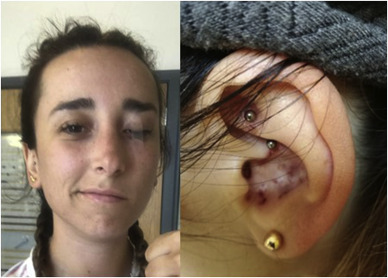
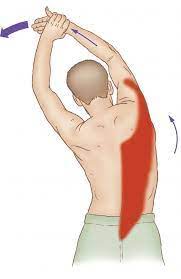
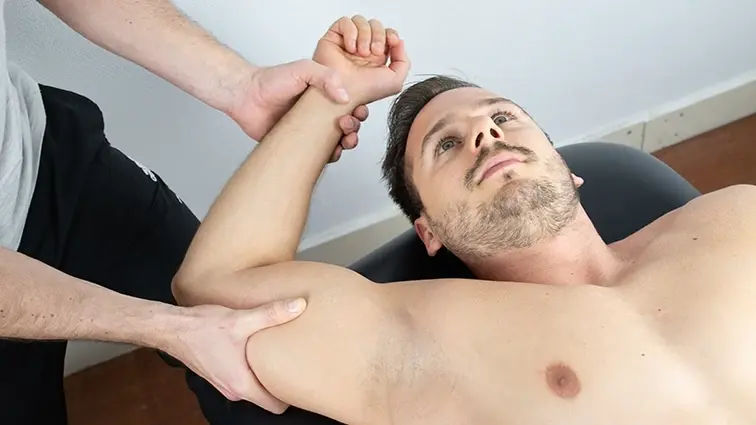

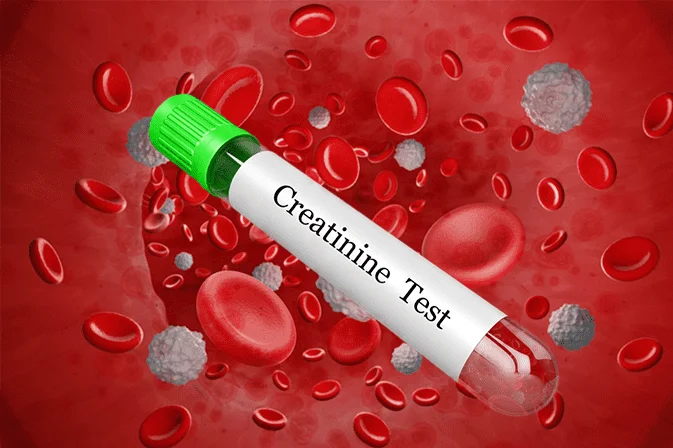
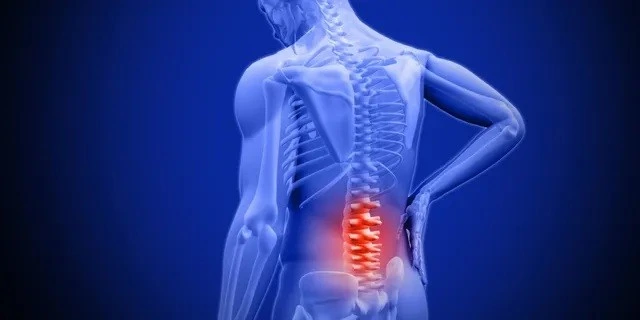

3 Comments